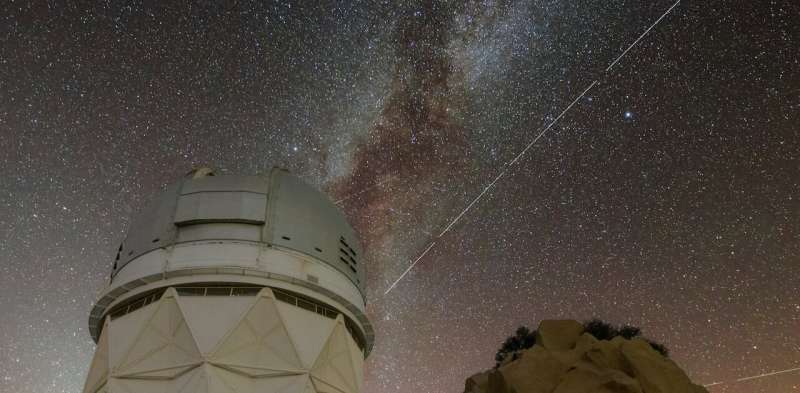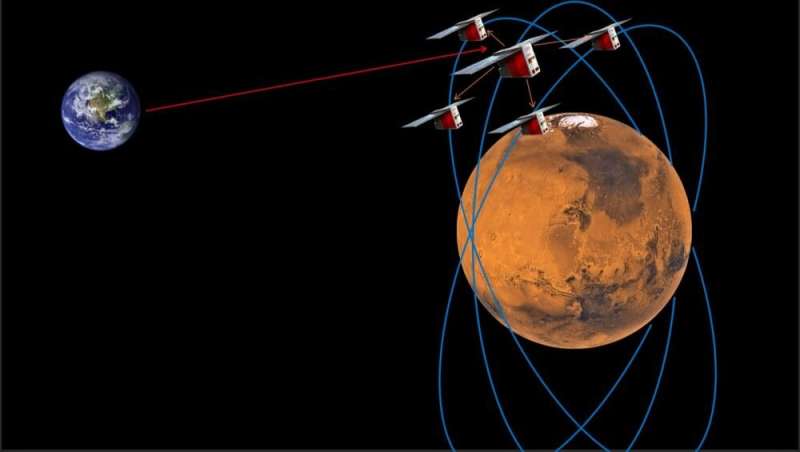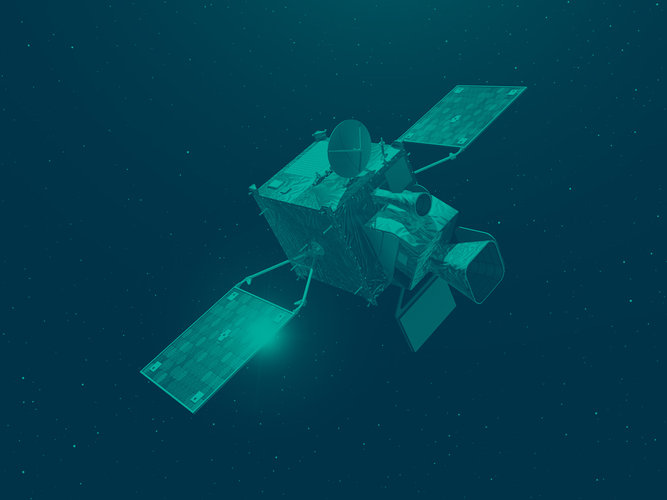
Copernical Team
Extraterrestrial signal search is underway using the southern hemisphere's biggest radio telescope
 Breakthrough Listen has begun observations using a powerful new instrument deployed to the MeerKAT radio telescope in the remote Karoo region of South Africa. The new search for technosignatures - indicators of technology developed by extraterrestrial intelligence - expands the number of targets searched by a factor of 1,000.
The astronomers and engineers on the Breakthrough Listen team ha
Breakthrough Listen has begun observations using a powerful new instrument deployed to the MeerKAT radio telescope in the remote Karoo region of South Africa. The new search for technosignatures - indicators of technology developed by extraterrestrial intelligence - expands the number of targets searched by a factor of 1,000.
The astronomers and engineers on the Breakthrough Listen team ha BlueWalker 3, an enormous and bright communications satellite, is genuinely alarming astronomers

The night sky is a shared wilderness. On a dark night, away from the city lights, you can see the stars in the same way as your ancestors did centuries ago. You can see the Milky Way and the constellations associated with stories of mythical hunters, sisters and journeys.
But like any wilderness, the night sky can be polluted. Since Sputnik 1 in 1957, thousands of satellites and pieces of space junk have been launched into orbit.
For now, satellites crossing the night sky are largely a curiosity. But with the advent of satellite constellations—containing hundreds or thousands of satellites—this could change.
The recent launch of BlueWalker 3, a prototype for a satellite constellation, raises the prospect of bright satellites contaminating our night skies. At 64 square meters, it's the largest commercial communications satellite in low Earth orbit—and very bright.
Pollution of the night sky
With a small network of satellites around Mars, rovers could navigate autonomously

When it comes to "on the ground" exploration of Mars, rovers make pretty good advance scouts. From Pathfinder to Perseverance, we've watched as these semi-autonomous robots do what human explorers want to do in the future. Now, engineers are studying ways to expand rover exploration on Mars. One thing they're thinking about: communication satellite constellations for Mars surface navigation.
The current generation of Mars rovers landed in easily accessible places. Other Martian regions, such as the poles, or Valles Marineris, remain pretty much untouched. That's partly because they're difficult to reach and their weather conditions present challenges. The poles hold a lot of clues to the Martian climate system. Although one cap is known to be mostly water ice, both caps could contain (or be hiding) additional water either in underground lakes or frozen beneath the caps.
Meteosat Third Generation

Meteosat Third Generation
Renewed support for ESA innovation at Paris Ministerial
Member State delegations pledged a record-breaking €16.9 billion budget for ESA at last week's Council at Ministerial Level in Paris, including renewed support for dedicated R&D programmes employed by ESA’s Directorate of Technology, Engineering and Quality to invent the future in space.
SiriusXM commissions Maxar to build two satellites
 Maxar Technologies and SiriusXM (NASDAQ: SIRI) have announced a new agreement commissioning Maxar to build and deliver two new geostationary communications satellites for SiriusXM. The SXM-11 and -12 satellite orders increase the total number of spacecraft in development for SiriusXM by Maxar to four, following the 2021 agreement for the construction of SXM-9 and -10.
"This investment reaf
Maxar Technologies and SiriusXM (NASDAQ: SIRI) have announced a new agreement commissioning Maxar to build and deliver two new geostationary communications satellites for SiriusXM. The SXM-11 and -12 satellite orders increase the total number of spacecraft in development for SiriusXM by Maxar to four, following the 2021 agreement for the construction of SXM-9 and -10.
"This investment reaf NASA's Orion capsule to leave distant retrograde orbit, return to Earth
 NASA's Orion space capsule, which is in day 15 of its Artemis 1 test flight, is scheduled to leave its current distant retrograde orbit on Thursday, as the spacecraft begins the process of returning home to Earth.
Artemis 1 mission management leaders provided a preview on Wednesday, from Johnson Space Center, of the upcoming maneuver that will ultimately send the test flight past the mo
NASA's Orion space capsule, which is in day 15 of its Artemis 1 test flight, is scheduled to leave its current distant retrograde orbit on Thursday, as the spacecraft begins the process of returning home to Earth.
Artemis 1 mission management leaders provided a preview on Wednesday, from Johnson Space Center, of the upcoming maneuver that will ultimately send the test flight past the mo Arianespace Ariane 6 to launch Intelsat satellites
 Arianespace signed a contract with longtime customer Intelsat to launch two satellite payloads, IS-41 and IS-44, using the heavy-lift Ariane 64 from Europe's Spaceport in French Guiana in 2025. This agreement repurposes a previous launch contract and adds one additional satellite.
"We are honored, yet again, by our faithful longtime partner Intelsat with another significant contract," said
Arianespace signed a contract with longtime customer Intelsat to launch two satellite payloads, IS-41 and IS-44, using the heavy-lift Ariane 64 from Europe's Spaceport in French Guiana in 2025. This agreement repurposes a previous launch contract and adds one additional satellite.
"We are honored, yet again, by our faithful longtime partner Intelsat with another significant contract," said Arianespace supporting the European Union's Copernicus program with Vega C
 On November 29, 2022, Arianespace announced having signed with the European Commission (Directorate General for Defence, Industry and Space), a contract for the procurement of five launch services with Vega C for the Copernicus component of the European Union's (EU) Space Programme.
"I would like to thank the European commission, especially the DG DEFIS teams, along with ESA, for continuin
On November 29, 2022, Arianespace announced having signed with the European Commission (Directorate General for Defence, Industry and Space), a contract for the procurement of five launch services with Vega C for the Copernicus component of the European Union's (EU) Space Programme.
"I would like to thank the European commission, especially the DG DEFIS teams, along with ESA, for continuin AST SpaceMobile announces pricing of upsized $75M public offering of Class A common stock
 AST SpaceMobile, Inc. (NASDAQ: ASTS) has announced the pricing of its previously announced public offering of its Class A common stock, par value $0.0001 per share (the "Class A Common Stock"). The Company has agreed to sell 13,636,364 shares of Class A Common Stock at a price to the public of $5.50 per share. The Company has granted the underwriter a 30-day option to purchase up to an additiona
AST SpaceMobile, Inc. (NASDAQ: ASTS) has announced the pricing of its previously announced public offering of its Class A common stock, par value $0.0001 per share (the "Class A Common Stock"). The Company has agreed to sell 13,636,364 shares of Class A Common Stock at a price to the public of $5.50 per share. The Company has granted the underwriter a 30-day option to purchase up to an additiona 
